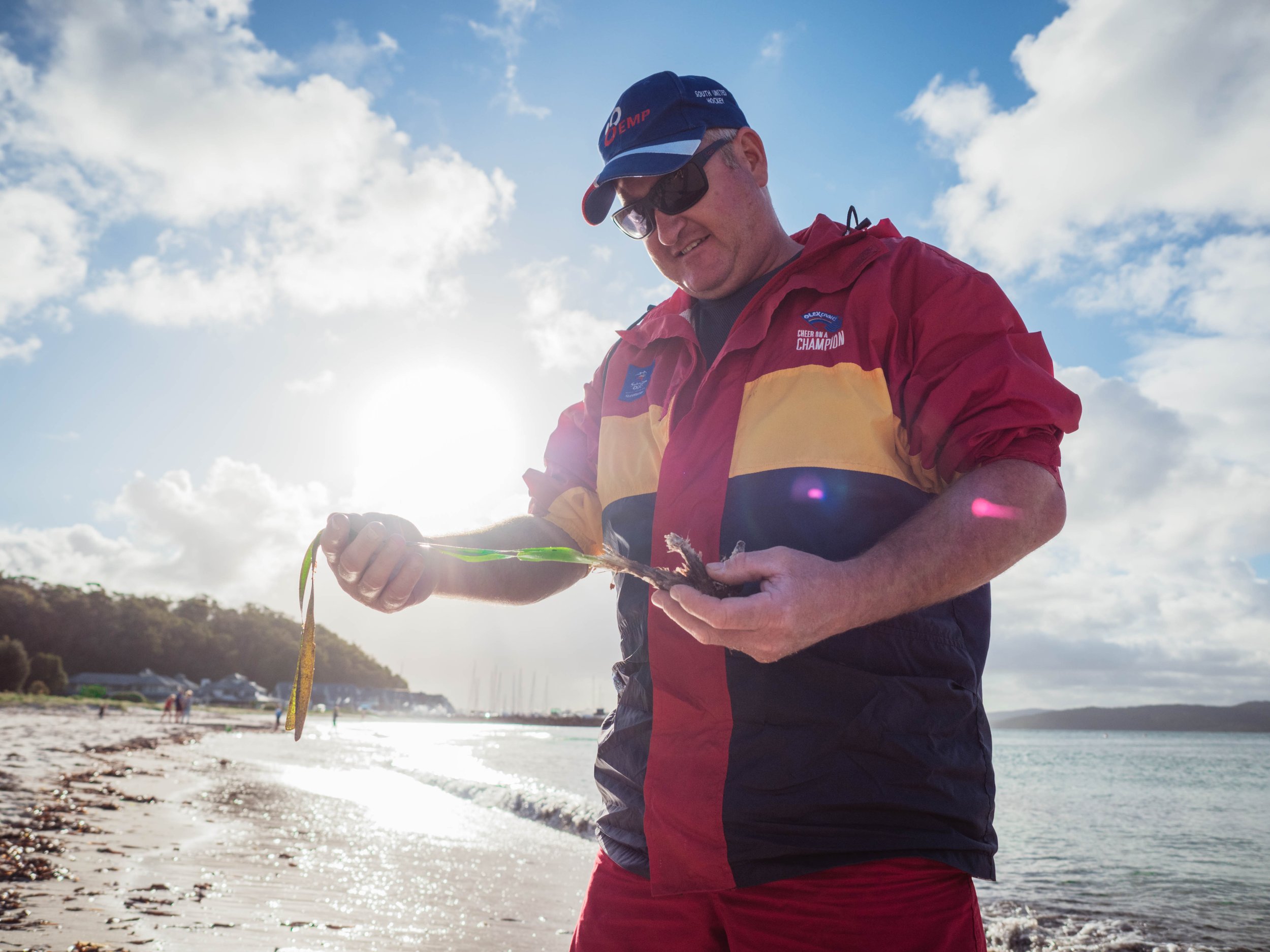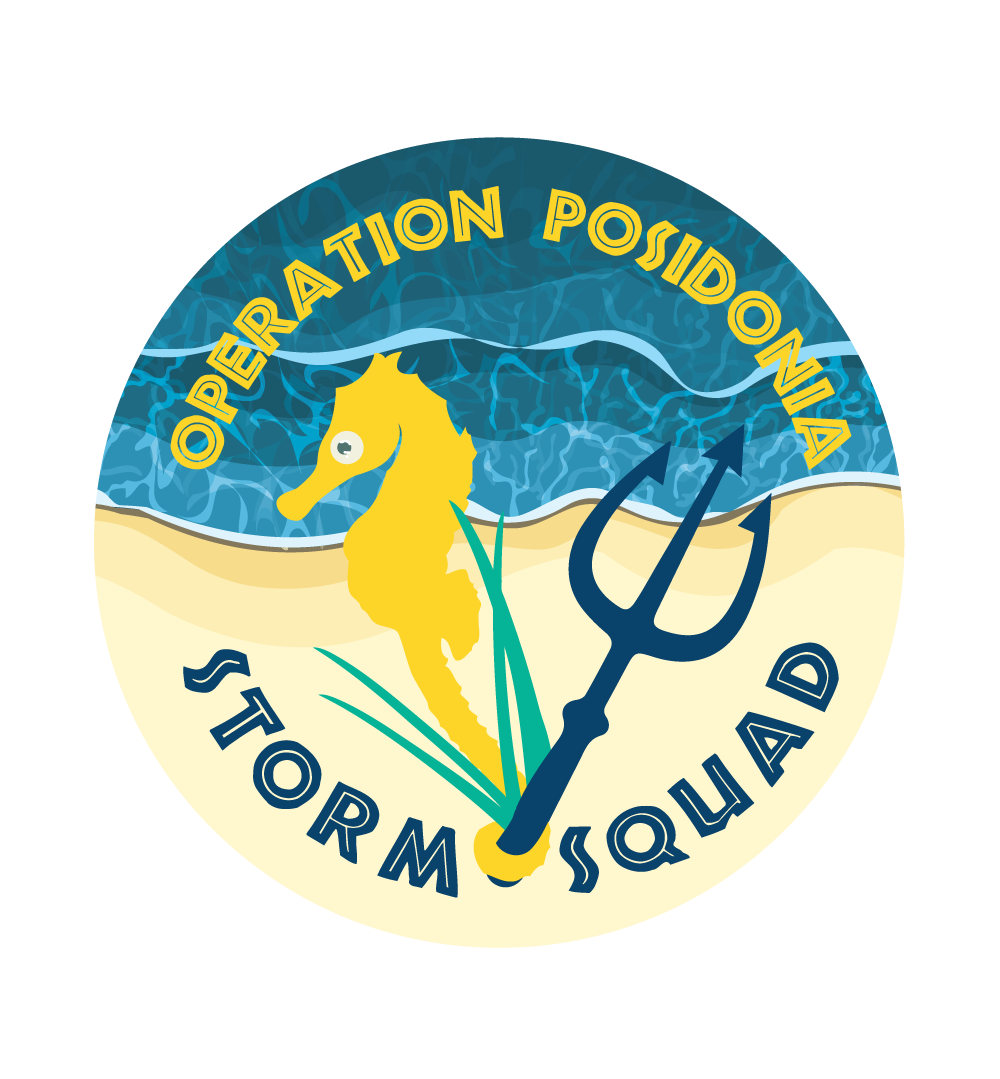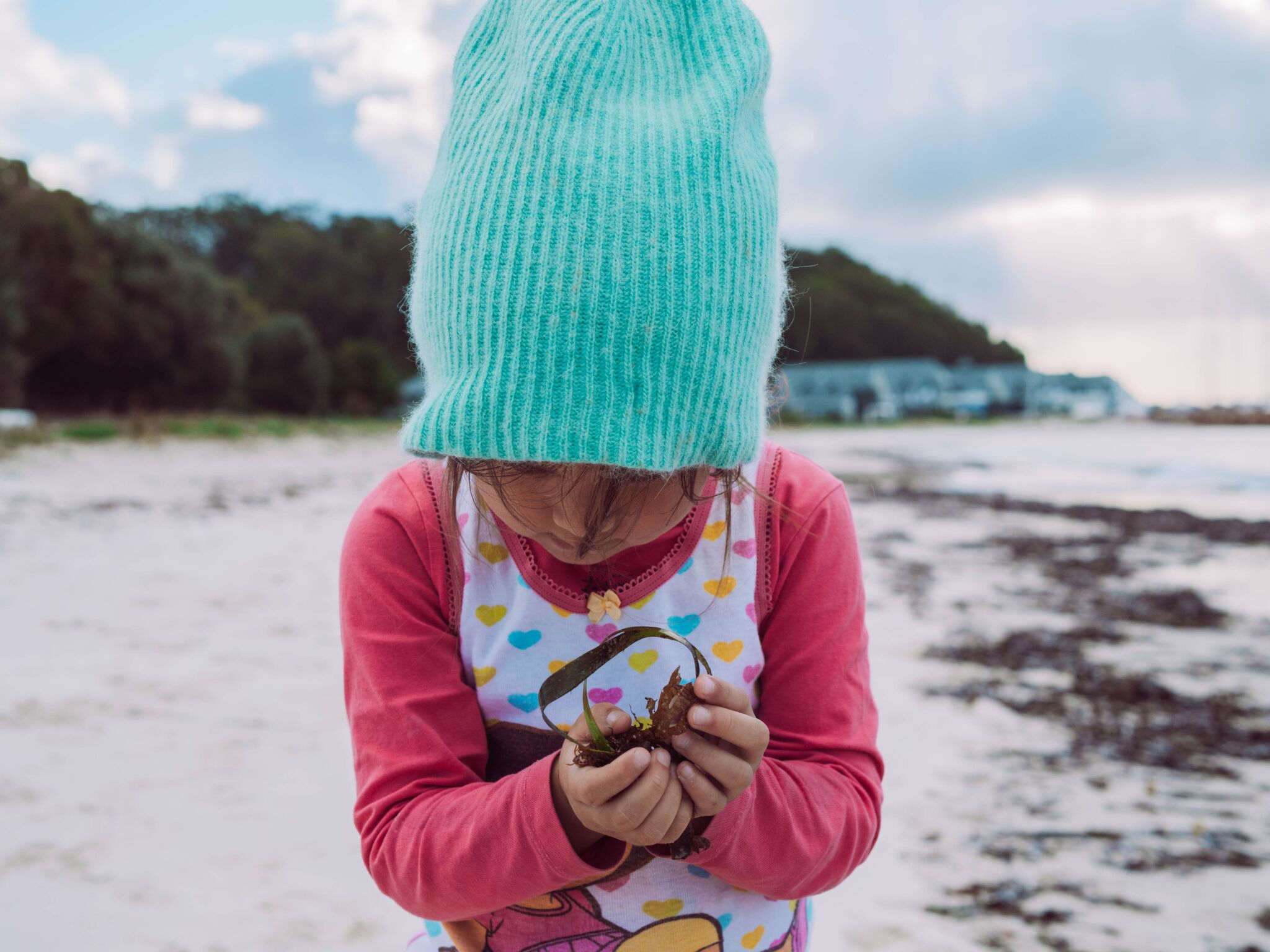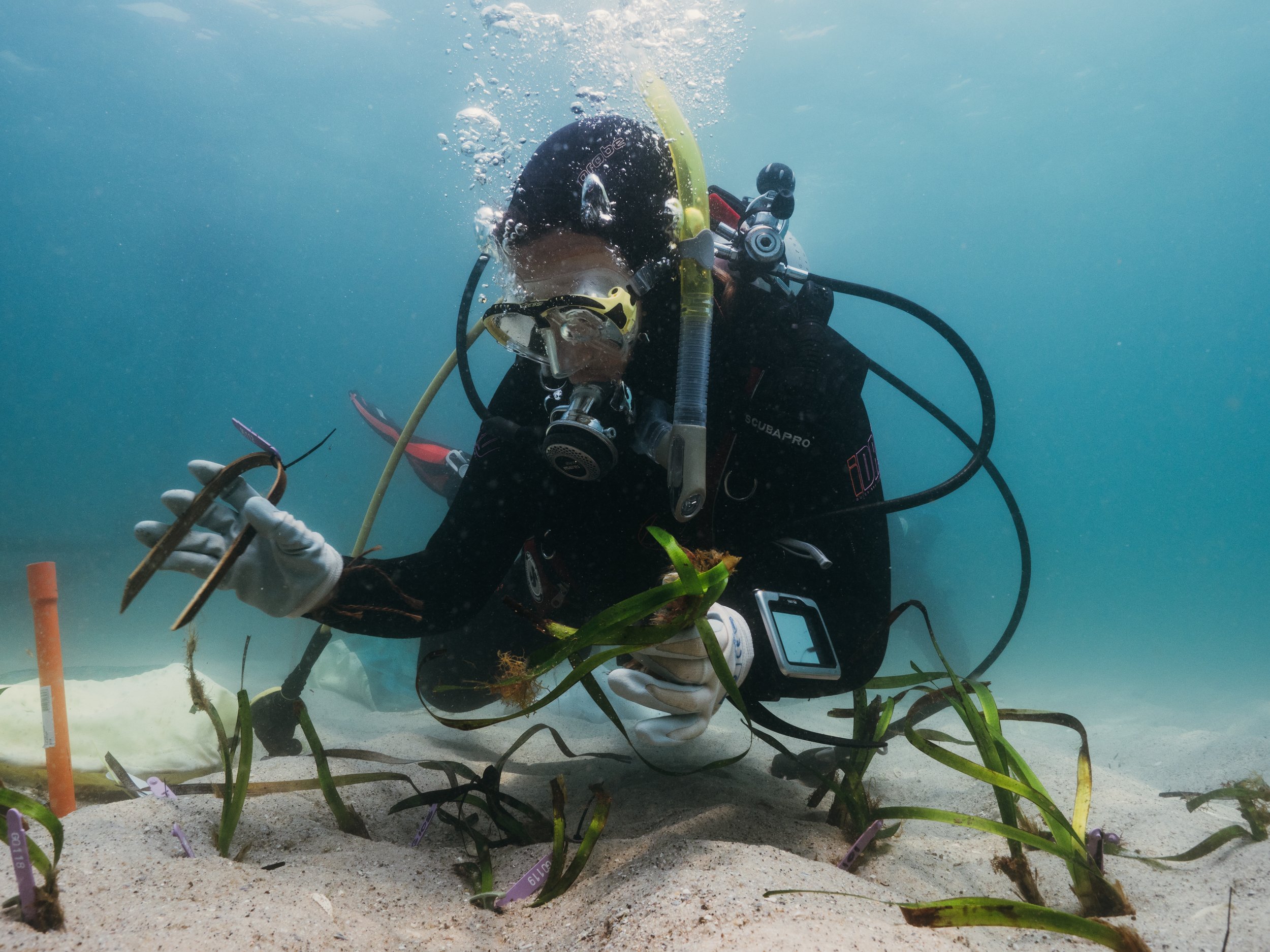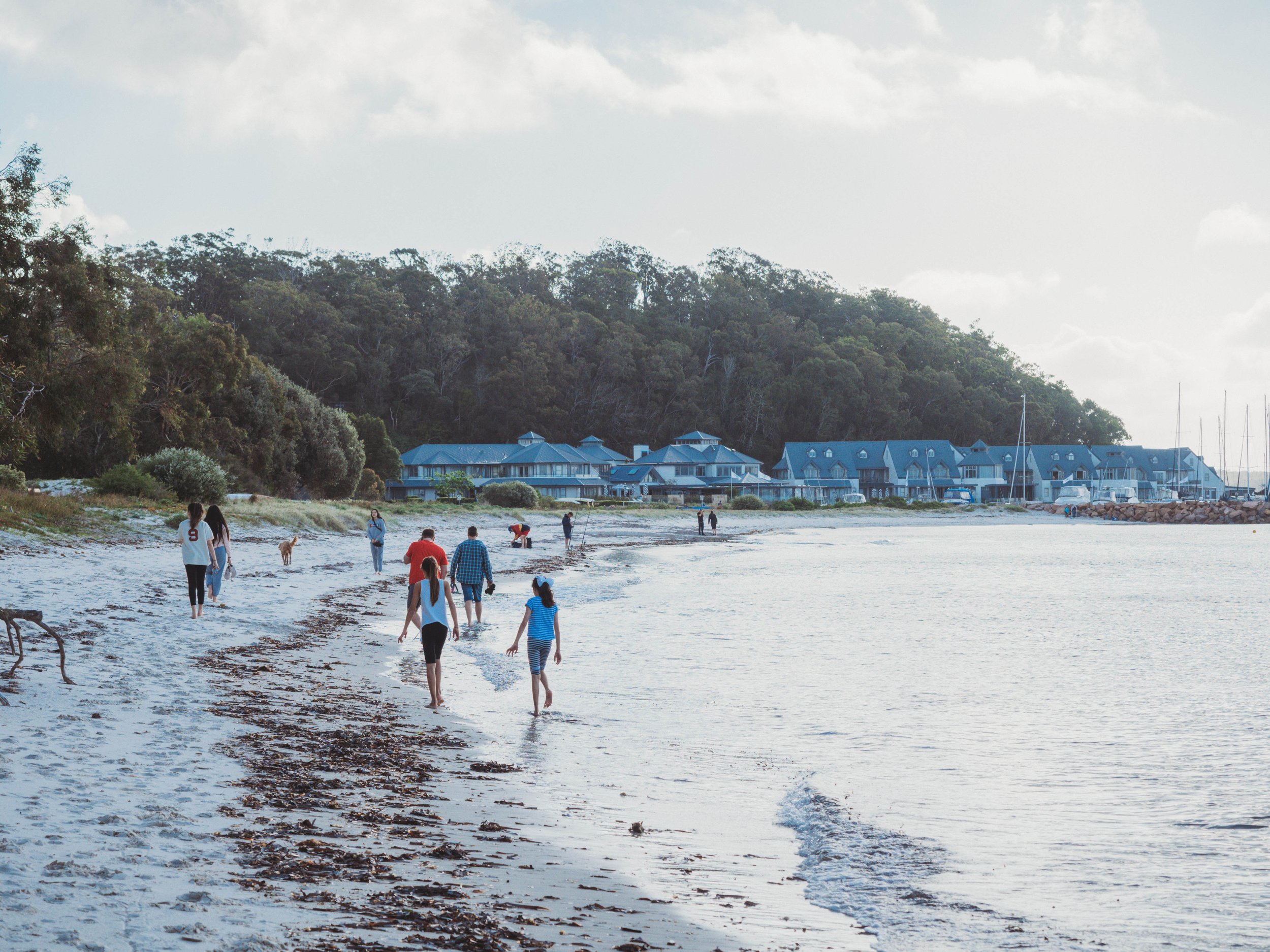
Port Stephens
The Birthplace of Operation Posidonia
Port Stephens is the ideal coastal playground...
…with inviting, calm waters perfect for fishing, swimming, and cruising on boats. These conditions are also ideal for seagrasses to flourish. Port Stephens is home to beautiful Posidonia australis meadows; however, they are under threat from local human activities. Posidonia meadows in Port Stephens are the 2nd most impacted by swing moorings in NSW, but the Operation Posidonia team has been working to address this issue.
Shoal Bay, near the estuary entrance, is the first home of Operation Posidonia. In 2018, the team demonstrated that beach-cast fragments of Posidonia, collected by citizen scientists, are a fantastic solution for restoring this important habitat, including within old boat mooring scars.
This map shows the location of Port Stephens on the NSW coastline. The meadows here are located just north of the six populations classified as endangered by the NSW Fisheries Management Act, which are found from Port Hacking to Lake Macquarie.
The Posidonia here may still be protected under the federal EPBC Act.
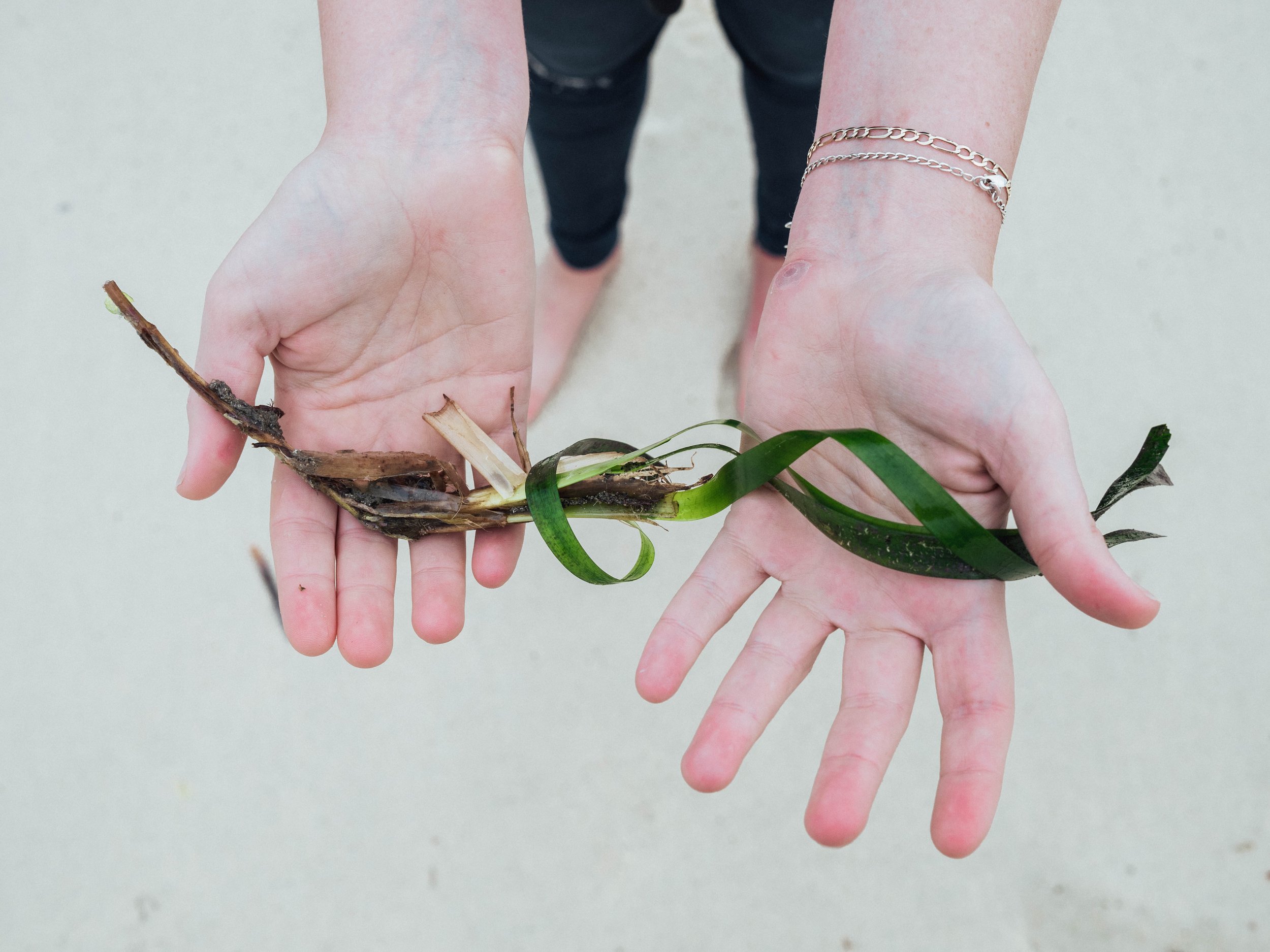
The power of citizen science
Collecting beach-cast fragments of Posidonia to use in restoration helps us restore meadows without damaging vulnerable populations. To do this, Operation Posidonia enlisted help from the local community to find washed-up fragments before they dried out, to plant them back into areas where Posidonia had disappeared: the Storm Squad concept was created! This exciting solution allowed community members to assist with marine conservation hands-on, to protect the underwater world on their doorstep.
The Storm Squad volunteers drove this fantastic restoration effort, with their contribution doubling the team’s restoration capacity in Port Stephens.
The results of this research were very positive. Some areas showed up to ~70% survival of transplanted Posidonia, with fragments producing new shoots after only 6 months. Restoration was also successful under newly installed Environmentally Friendly Moorings, showing the combination is a promising future solution for both Posidonia and boat owners.
Postdoctoral Research Fellow (UNSW) Giulia Ferretto led this research, and still leads Operation Posidonia. Read about the Port Stephens restoration and Giulia’s research here.
Hear Giulia’s recent interview with SBS Italian here, and check out the video below and some photos of our volunteers and divers in action!
Left photo credit: Richard Woodgett.
We thank our collaborators from NSW DPI, SIMS and UWA, as well as our volunteers from UNSW and the Port Stephens community. Thank you to our friends Grumpy Turtle and Dr David Harasti who have helped bring the underwater world to your screens.
Operation Posidonia acknowledges the Worimi People, the Traditional Custodians of the Country on which we conduct our research for this project. We recognise their continuing connection to the land and waters, and thank them for protecting this coastline and its ecosystems for many generations. We extend these respects to Elders past and present, and to all First Nations people.



